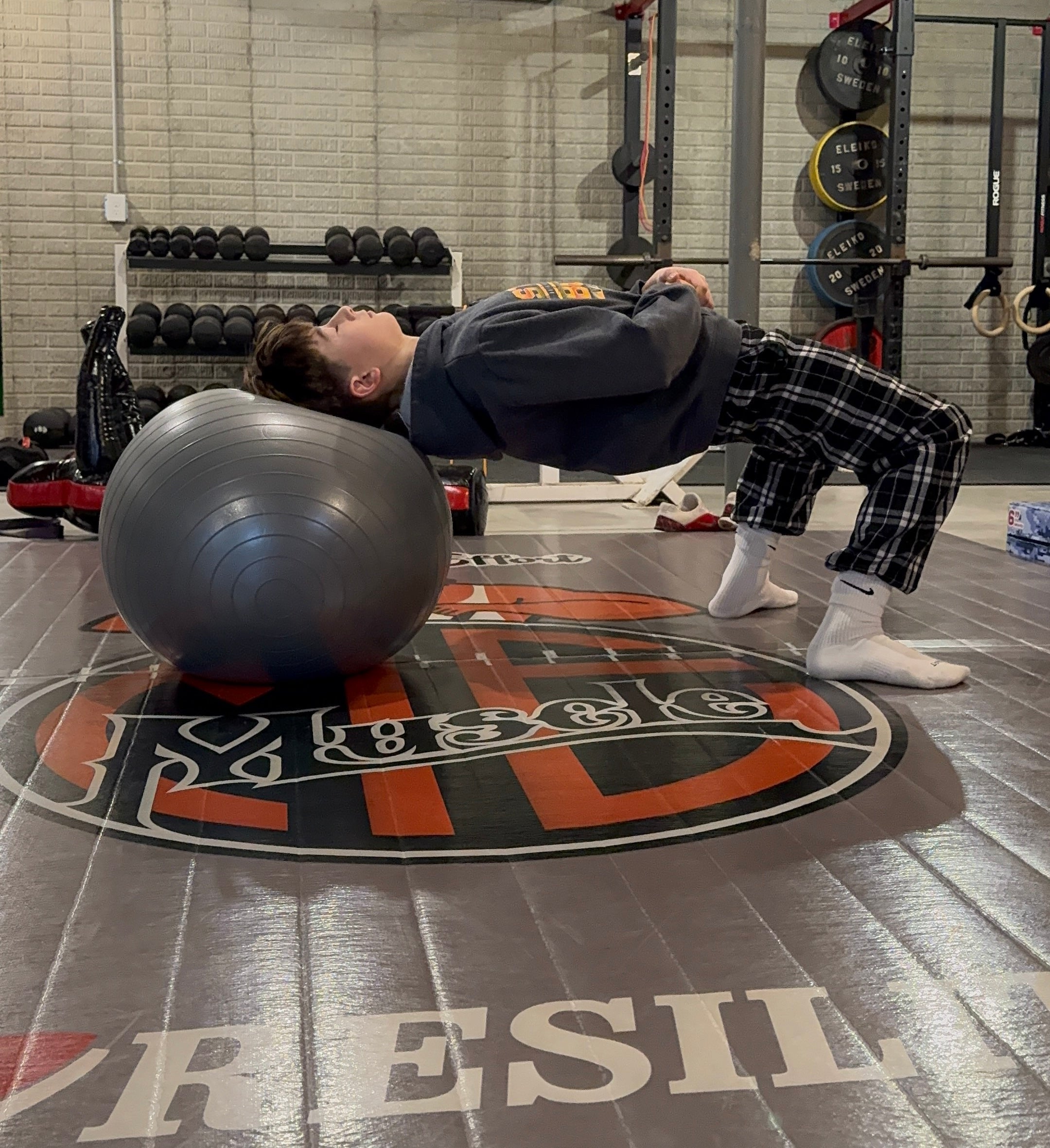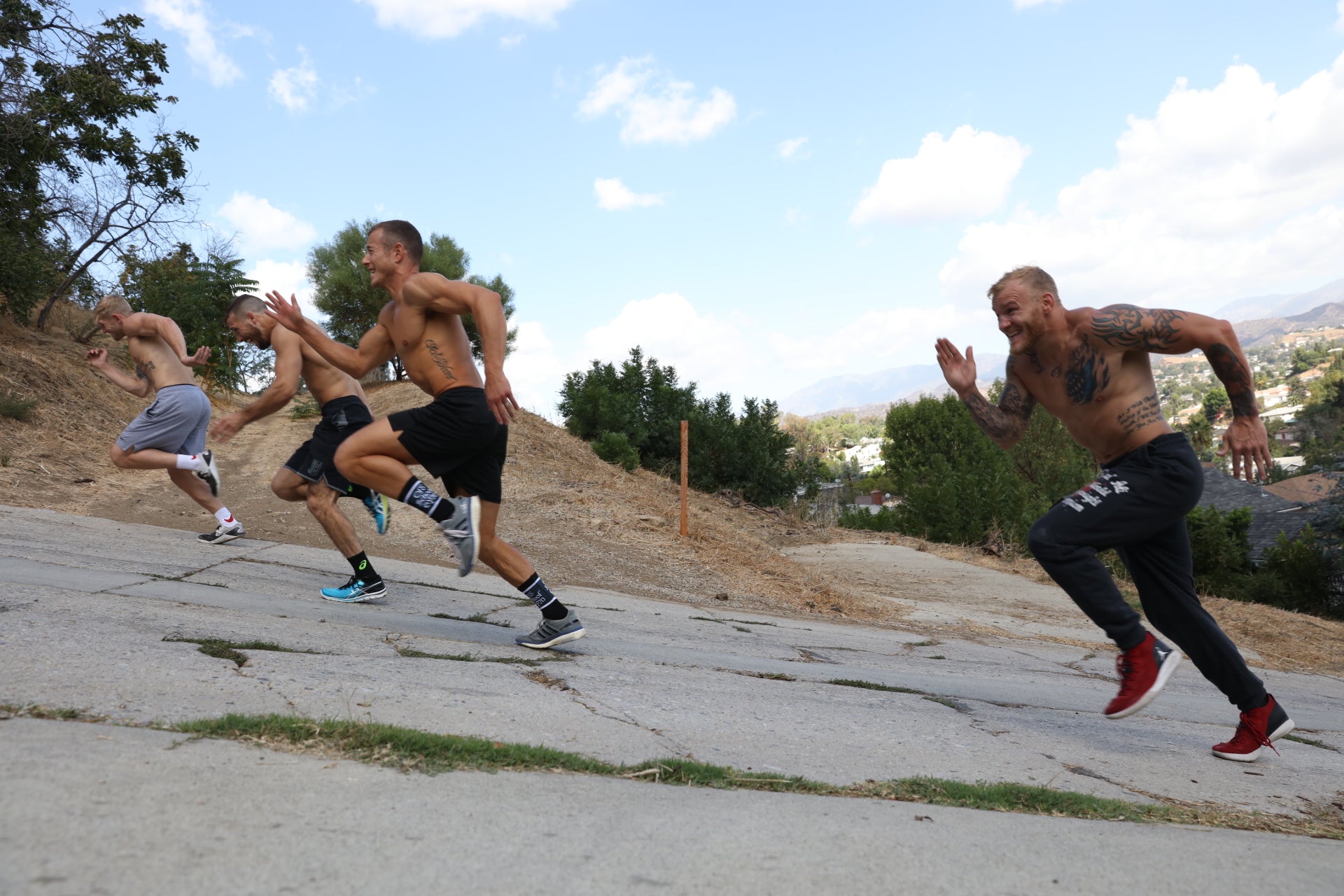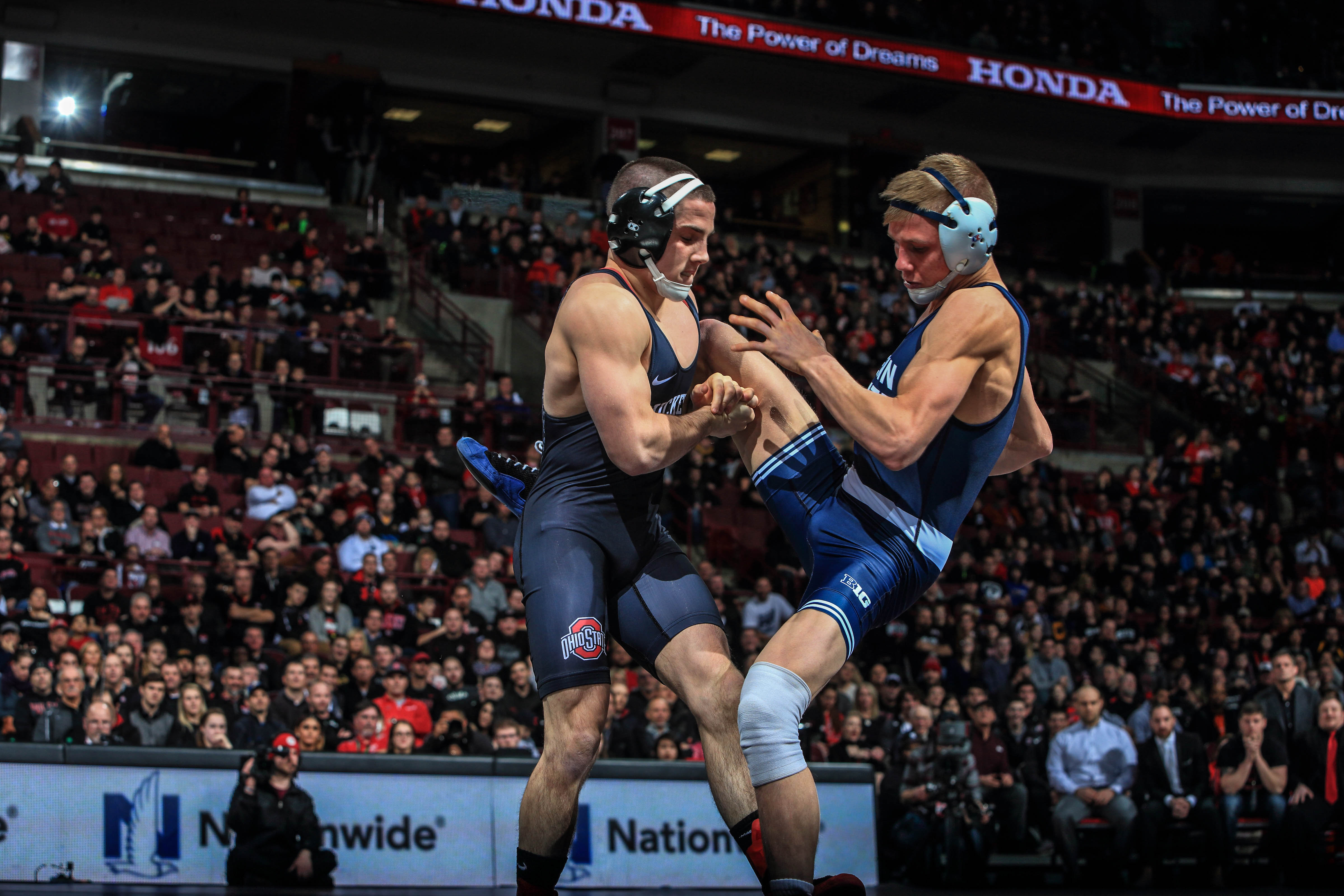Going to the gym and lifting weights builds muscle, but what if you’re on the road? Would bodyweight movements or workouts in small hotel gyms do the job?
Here’s the truth: While more challenging, building muscle on the road is entirely possible. You just need the right tactics to create effective training.
Let’s break down what that means.
Maximizing Muscle Gain With Challenging Bodyweight Training
For many, bodyweight training seems like a waste of time, only suitable for beginners looking to make regular exercise a habit. There is some truth to this, but here’s the thing:
Bodyweight exercises can be fantastic for muscle gain, so long as you adhere to one important rule: keep your workouts challenging and do more work over time.
The human body understands tension. It doesn’t care where it comes from and won’t stop muscle gain just because you’re away from a typical gym setting.
For example, if classic push-ups become too easy, you can always try more challenging variations:
- Decline push-ups
- Plyometric push-ups
- Weighted push-ups (using a backpack)
To increase difficulty, you can also:
- Manipulate the tempo (do reps more slowly)
- Add a pause (at the bottom of each movement)
- Increase the range of motion (elevate your hands and lower yourself more)
The same goes for almost every bodyweight movement: you can always make it more challenging.
Additionally, tracking your progress through total volume provides a helpful measurement for bodyweight exercises. Increasing the repetitions you perform each week indicates that you’re getting stronger.
This approach works better than time-based workouts where you might slow your tempo as fatigue sets in, making it easier to last 30 or 60+ seconds on a given activity. In such cases, workouts might feel subjectively easier, leading you to incorrectly assume progress when, in reality, you’re simply doing less work than before.
Making the Most of Limited Hotel Gym Equipment
Hotel gyms rarely meet our expectations, and only select properties invest in comprehensive fitness facilities that would earn a high GymFactor score in our rating system.
Through our GymFactor algorithm, we’ve analyzed hotel gyms worldwide and identified some common limitations. The data shows that many hotel gyms are too small and lack weights to challenge more advanced lifters. For instance:
- In the US, dumbbells might only go up to around 50 lbs (23 kg)
- In Europe, weights often top out at just 22 lbs (10 kg)
Plus, the few available machines are frequently poorly maintained, with visible rust and wear. The standard equipment usually includes a treadmill, exercise bike, or elliptical, with some gyms also offering a Smith machine, an adjustable bench, and a handful of weight plates.
So, should you give up and skip training? Absolutely not. You can still challenge yourself with a bit of extra thought and creativity.
Take dumbbells as an example. Even with limited weights, you can get a good workout:
- If they’re too light for your normal 8-12 rep range, do 20 or even 30 reps
- Rest less between sets to increase intensity
- Try more challenging variations of standard movements
For example, if you usually do dumbbell goblet squats, replace them with Bulgarian split squats. By training one leg at a time, you’ll find the same weight significantly more challenging.
Similarly, if the gym only has one back machine or an all-in-one station, focus on proper form:
- Train through a full range of motion
- Make a conscious effort to activate your muscles
- Do multiple sets with varying grips (close, wide, underhand, overhand)
Bring Your Training Equipment While Traveling
To upgrade your workouts while traveling, consider packing some lightweight equipment.
Resistance bands are perhaps the most versatile option. They:
- Come in multiple tension levels
- Allow for dozens of exercise variations
- Weigh next to nothing in your luggage
If you’re already quite strong, incorporate single-arm and single-leg variations to increase the challenge. For example, instead of training both arms together with a resistance band, work one side at a time to double the force your muscles need to produce.
Another excellent option is a TRX suspension trainer. It:
- Rolls up into a super-small bag that fits in your carry-on
- Can be hung from a hotel door or secured to a tree outdoors
- Enables almost all resisted movements you can think of
- Sets up in seconds
The Overlooked Factors in Building Muscle
Many trainees limit their muscle-building potential even while training in well-equipped gyms. This happens because they focus primarily on moving weight from point A to point B while disregarding factors that play a more significant role.
1. Use Full Range of Motion
It’s tempting to train with a shorter range of motion because it allows you to lift heavier weights and feel stronger. However, to optimally activate and stimulate a muscle, you should train it through an extended range of motion.
This approach allows you to maximally stretch and contract your muscles, making each repetition harder but more disruptive and beneficial.
A simple training technique to leverage when traveling is time under tension (TUT). This refers to the total time your muscles work during a movement. The longer the motion, the longer your muscles have to work.
2. Keep a Consistent Repetition Tempo
Lifting lighter weights increases the risk of inconsistent tempo because each rep takes less effort. It’s easy to fall into the trap of powering through sets as quickly as possible.
However, a steady tempo is vital because it allows for solid eccentric and concentric contractions of each muscle you train.
If you only focus on lifting the weight but then let it drop on the way down, you’re making each repetition half as effective. A good rule is to take:
- Two seconds to lift the weight
- Two seconds to lower it
- One second to hold the contraction at the top
3. Include Eccentric Movements
Focus more on the lowering (negative) phase of exercises. For example, during a resistance band bicep curl, lift the band as usual but slowly lower it as your arms extend.
This eccentric move (stretch under load) is crucial for muscle growth and building strength.
Consider the pull-up: By jumping to the top position and lowering your body very slowly, you gradually build the strength needed to perform multiple pull-ups in the future.
The best part? Eccentrics are perfect for staying fit while traveling. Whatever movement you do, slow things down to keep your muscles more engaged and provide a stronger stimulus.
4. Don’t Forget the Mind-Muscle Connection
Though it may sound unimportant, research suggests that the mind-muscle connection plays a vital role in training.
No matter where you train or what equipment you have access to, always try to mentally connect with the muscles you’re working. Doing so can:
- Better engage your muscles
- Improve performance
- Create a more significant growth stimulus
Fun fact: A 2007 Harvard study found that educating hotel maids about how their daily tasks contribute to physical fitness led to weight loss, lower blood pressure, and healthier body composition—despite no changes to their diet or daily routine. In contrast, the control group that wasn’t given this information saw no benefits.
Bottom Line
Working out while traveling doesn’t have to compromise your fitness routine. Building muscle on the road is entirely possible with the right tactics, such as keeping bodyweight exercises challenging.
It can even be an opportunity to learn new skills and experiment with lightweight equipment like resistance bands or a TRX suspension trainer.
If you’re serious about building muscle while traveling, consider using a fitness app for structure and guidance. Or, better yet, why not stay in a hotel that takes fitness seriously and provides everything you need?
That’s exactly why we created our GymFactor rating system. Before booking your next trip, check the hotel’s GymFactor score to understand exactly what fitness equipment and facilities will be available to you. This way, you’ll never have to skip a workout again or be surprised by inadequate gym facilities.







